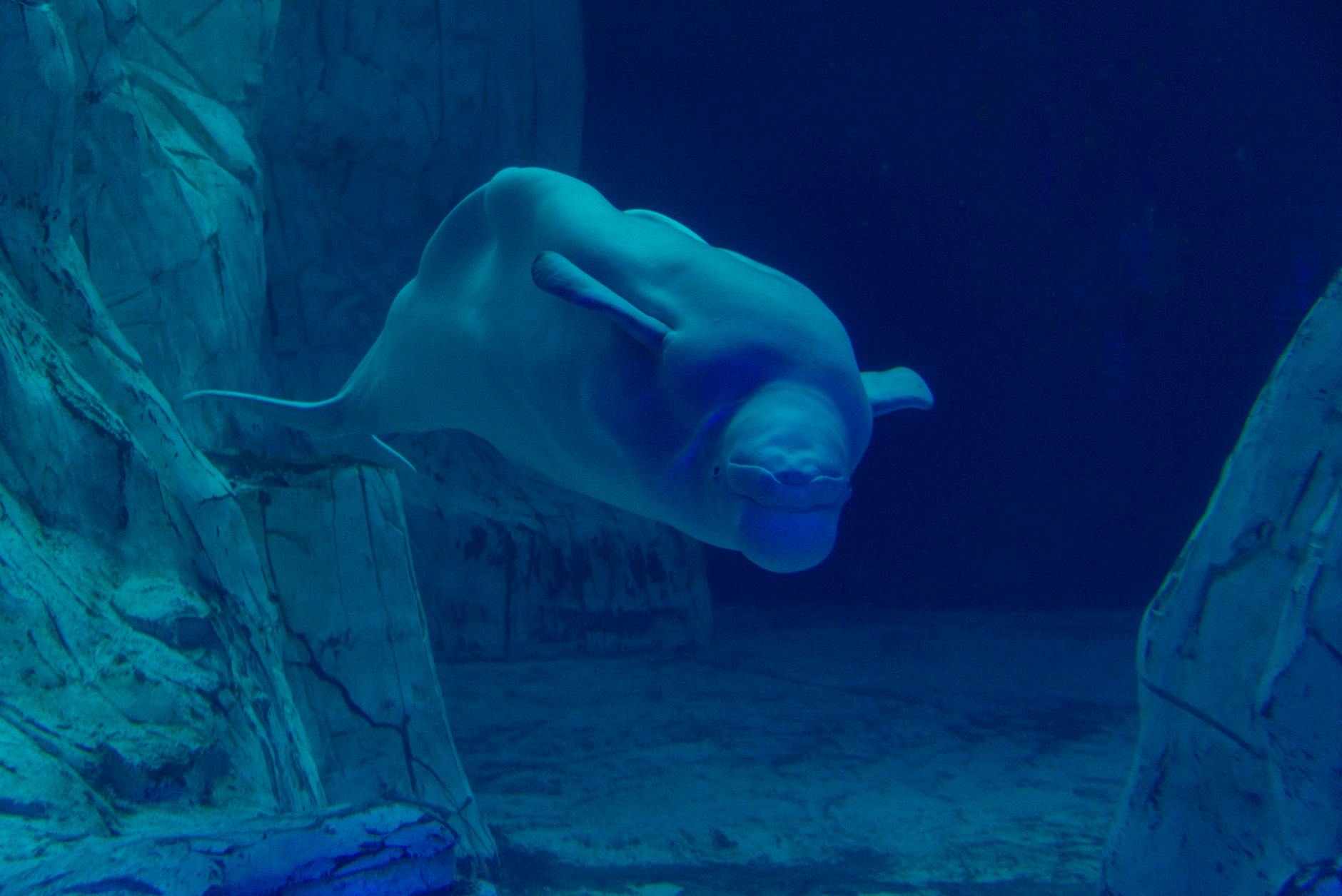Beluga whales are one of the most captivating marine mammals. Despite popular curiosity, the topic of “beluga whale knees” often leads to myths and misunderstandings.
Do belugas really have knees, or is it just an optical illusion? This article dives into the truth about beluga whale anatomy and other fascinating facts about these incredible creatures.
What Are Beluga Whale Knees?
Many people believe that beluga whales have visible “knees” due to the distinct lumps along their bodies. These bulges are not knees but rather part of their flexible, muscular body structure.
Beluga whales lack actual knee joints, as they do not have legs like land mammals. The lumps you see are primarily due to layers of blubber and muscle, giving them their characteristic “lumpy” appearance.
Do Whales Have Knee Joints?
No, whales do not have knee joints in the traditional sense. Whales are mammals, so they share a distant ancestry with land-dwelling creatures that had legs and knees.
Over time, whales evolved to have flippers instead of legs, adapting to a life entirely in water. Inside a whale’s flippers, you can still find a vestigial structure like the bones in a hand or paw, but there are no functional knee joints in modern whales.
What Are 5 Interesting Facts About Beluga Whales?
Beluga whales are truly unique among marine animals. Here are five fascinating facts about them:
- They’re Known as “Sea Canaries” Beluga whales are highly vocal and can mimic sounds, earning them the nickname “sea canaries.” They communicate through a variety of clicks, whistles, and clangs that help them navigate and socialize in their environment.
- Belugas Can Move Their Heads Unlike most other whales, belugas have a flexible neck due to their un-fused cervical vertebrae. This flexibility allows them to move their heads side-to-side and up-and-down, adding to their expressive nature.
- They Have a Thick Layer of Blubber Beluga whales have a dense layer of blubber, which insulates them in the frigid Arctic waters. This blubber also gives them a “lumpy” appearance, which can sometimes create the illusion of “knees.”
- They Undergo a Molting Process Each summer, beluga whales shed the top layer of their skin, a process called molting. They often rub against gravel and rocks to help remove old skin, which keeps them clean and healthy.
- They Have a Rich Social Structure Beluga whales are social animals that live in pods and display strong family bonds. They often engage in social play and are known to be one of the most interactive marine mammals with each other and even with humans.
Why Do Beluga Whales Look Lumpy?
Beluga whales have a unique, lumpy appearance mainly due to their thick blubber and muscular structure. This layer of blubber is crucial for survival in the cold Arctic waters, acting as an insulator and an energy reserve.
Additionally, belugas lack the sleek, streamlined shape of many other whales, which gives them a distinctive rounded look. The flexibility of their skin and muscle also contributes to the illusion of “knees” or other lumps along their bodies.

What Is the IQ of a Beluga Whale?
While exact measures of beluga whale intelligence, or “IQ,” are difficult to determine, belugas are known for their high level of intelligence among marine mammals. Their brain structure and behavior suggest complex cognition.
They are capable of problem-solving, social learning, and even understanding commands in captive settings. Some researchers compare beluga intelligence to that of dolphins, which are considered some of the smartest animals in the ocean.
Which Whale Is the Friendliest?
Beluga whales are widely regarded as one of the friendliest whale species. Known for their curiosity and gentle demeanor, belugas often approach boats and interact with humans in the water.
Their playful behavior and interest in human activities make them popular attractions at aquariums and marine parks. Belugas are also known to develop bonds with their caregivers and engage in playful activities, showcasing a friendly nature rarely seen in larger whale species.
What Is a Whale’s Worst Enemy?
The worst enemy of whales, including belugas, is human impact on the oceans. Pollution, climate change, and hunting have all taken a toll on whale populations. For belugas, shrinking sea ice in the Arctic has led to habitat loss, while pollution from chemicals and heavy metals affects their health.
Additionally, orcas (killer whales) pose a natural threat to some whale species, though belugas, with their smaller size and social structure, are less commonly targeted by orcas.
What’s the Cutest Whale?
Beluga whales are often considered the cutest whales, thanks to their friendly faces and expressive eyes. With their rounded heads and wide mouths that almost look like smiles, belugas have a uniquely adorable appearance.
Their white coloration and social behavior further add to their charm, making them a favorite among marine life enthusiasts.
Do Whales Enjoy Humans?
While we can’t definitively know if whales “enjoy” human interaction, some species, like belugas, show curiosity and even a playful attitude toward people. In regions where belugas live close to human settlements, they have been observed approaching boats and interacting with divers.
In captivity, belugas can form bonds with trainers and have been known to respond to human commands and gestures. While whales, in general, are cautious of humans, some belugas seem to engage with humans in a way that suggests interest and possibly enjoyment.
Conclusion
Beluga whales are extraordinary creatures with unique anatomical features and behaviors. Though they don’t actually have knees, their lumpy appearance, playful nature, and flexible neck make them one of the most distinctive whales in the ocean. These friendly “sea canaries” bring joy to those who encounter them, whether in the wild or in conservation settings. Their intelligence and social nature remind us of the complexity and wonder of marine life.



Pingback: Are Narwhals Real? 10 Amazing Facts
Pingback: What Do Whales Eat? Best 5 Feeding Techniques
Pingback: The Great Whales Everything You Need To Know